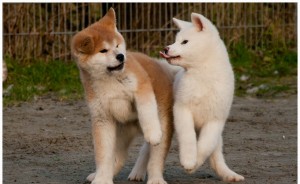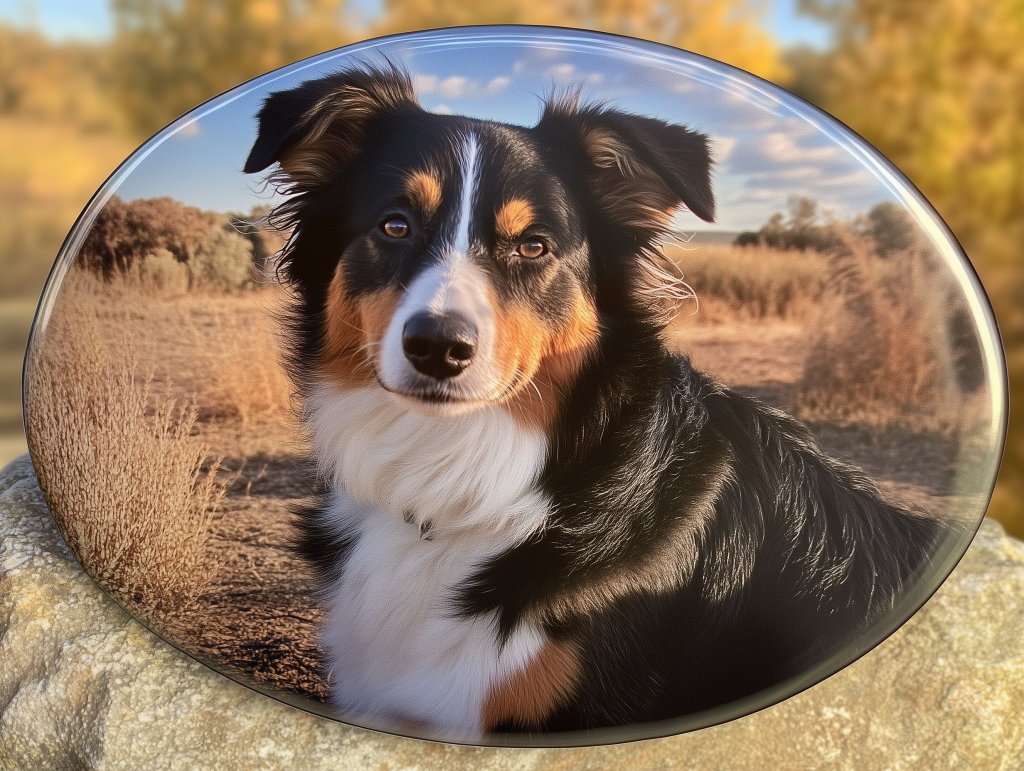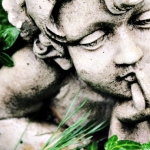Remembering our Pets – History and Memories.

“Bork Bork, Frank, you’re doing me a bamboozle!”
Article written by:
Anthony “Ajay” Bean – Graphic Designer.
Our pets are a huge part of our lives. There’s an old saying, “They may be with us for part of our lives, but to them, we are their entire life.” The companionship and love our furry and feathery friends give us is boundless and endless. Sometimes, we often wonder why humans aren’t more like our animals, because of a held innocence that Animals have. They don’t have the issues we have to deal with; their lives seem a lot simpler. The time spent with our pets help us to get back to a simpler time, back when we were doing less work and playing more often.
So, it makes sense as to why humans grieve for Animals just as much as they do people. If you ask any Psychologist, anything that you dedicate your life to will trigger a sense of grief in your heart. As such, the bond in which our pets share with us is just as important as the bond shared with our fellow humans. There is an intense amount of history behind the special relationship between Humans and Pets.
Dogs: Vicious Wolf to Man’s Best Friend
The present day domesticated dog, canis familiaris descends from a prehistoric predecessor to the modern Grey Wolf, Canis Lupus. It was said that humans tamed the ferocious prehistoric wolf between 34,000 and 14,700 years ago. The way that this was determined was via an archaeological exhumation of a prehistoric grave, where a human was seen to be buried with a domesticated descendant of the wolf. Dog Domestication was first discovered in Western Europe, where evidence was discovered that the modern day dog was said to have split off from the wolf genus about 27,000 years ago. During man’s expansion eastward to Asia, man had the dog by his side, a fitting travel companion for the harsh winters of modern day Russia.
Other Descendants of ancestral Dogs include the Dingo, native to Australia, and the Basenji, which descended from wild dogs in Africa. The key trait is that these dogs do not have the ability to bark as they are more closely related to wild dogs of old. It’s rumored that the Dingo had come to Australia with Austroindonesian seafarers from New Guinea around 5,000 years ago, in whom The indigenous peoples of Australia held trading links with. As such, the Dingo eventually called Australia home. Dingoes were treated in the same way as all other residents who lived with roaming indigenous families, and were given Skin Names, and their elders were revered just as much as their human elders. Some groups even believed that the Dingo was an important totem. A Guardian of the Elders, A companion, A spiritual protector, A Cunning hunter, and a Warm friend when the nights of the desert get cold. Today, Dingoes play an important part in maintaining Australia’s biosecurity as hunters of introduced species such as Rabbits and feral pigs and cats; True guardians of the land. Their history with the land is as rich and diverse as the people who have called this land their home for thousands of years.
Today, the dog is both a hard working companion, and a loyal friend. Dogs are employed by Militaries, customs agencies and Police forces to serve as bomb and drug detectors and security associates. Their powerful noses can sniff out mines, drugs, and contraband. Their strength can take down an attacker who threatens to invade a premises or a fellow soldier. Their keen and eyesight can help guide the blind. Their love has helped many families bond, and has even helped those who suffer from mental illnesses such as Autism Spectrum Disorder and Depression, cope with the annals of modern life. Dogs are a key part of human culture, and have been for many thousands of years. We see a myriad of hilarious memes about “Doggos” getting “Heckin Bamboozled” shared all across Social Media. One famous breed, the Shiba Inu, became an internet icon in the form of “doge”, an endlessly memed character whose horrible English has left “such laughs” in our hearts. “Much Amaze. Wow.” Even in the world of tomorrow, our four-legged friends will be walking beside us, a permanent part of the human story. But, it isn’t just the beloved Canine which forms a core part of the human story. Felines have also shared just as big a role.
Cats: Revered Gods, Cunning Hunters, Adorable friends
If you’ve been on the internet in recent times, you’d be hard pressed to find a person who hasn’t sat for hours in front of their computer, watching endless cat videos on loop. (I know I sure have.) Their adorable faces, pointy ears, brushy tails and sonorous mews attracted us from the get-go, and there have been studies to suggest that modern domesticated Cats have evolved this cute look exclusively to appeal directly to our sense of “cuteness”. However, Cats have been more than just fluffy balls of adorableness. Some cats have been revered as ancient gods, whilst others have been employed as a key component to helping spread agriculture and ending disease.
The modern cat descends from smaller wildcats from Africa and in Asia. It is well rumored that because felines were seen as Gods in ancient Egyptian culture, that they were domesticated there, however it has recently been discovered that cats have had a connection to humans as far back as 9,500 years ago, where east Asian and middle-eastern farmers domesticated and bred wildcats to become both more compliant with human life, and also work alongside with humans to become skilled and tactical mousers, protecting their harvested grains from the scourge of field mice who are looking for a tasty grain snack.
Speaking of mice, it was the extensive and superstitious killing of cats in England which helped accelerate the spread of the Black Death, known formally as the Bubonic Plague. Cats and in particular black Cats, were once revered as symbols of Witchcraft, shape-shifting demons which would spread the Black Death. They were by the dominant Catholic Church, seen as demonic omens, a scourge of The Devil. Therefore, they were killed by the thousands as a result. With no cats maintaining the control of the exploding wild rat population, combined with the poor hygiene standard of the time and the even more rapidly exploding flea population which had no choice but to bite humans for sustenance, this resulted in an epidemic which wiped out almost a third of Europe’s population over the course of over 400 years, the single longest epidemic to have ever occurred. Once it was realised that it was the rats and the fleas that they carried that spread the Death, cat ownership numbers exploded. By the time the 16th century came around, The plague had subsided and owning a cat was now considered commonplace, beginning the age of cat fanciers who would breed cats to be loyal pest controllers, pompadour and sophisticated symbols of nobility, and sociable creatures who gave their owners endless companionship.
Nowadays, the cat is seen as a symbol of everything cute (At least if the Internet and my interest in Cat Videos has anything to do with it), but their cuteness hides a dark side. For the cats who are in the loving hands of owners, residing mostly indoors, they serve the same purpose as they always have, keeping mice under control and being a loyal companion. However, their proliferation in modern times, as well as the continued expansion of human populations and a more relaxed attitude to cats being outdoors have lead to another problem… Feral cats; Cats which have forgone their domestication and have abandoned their owners in place of a more wild lifestyle, choosing to be hunters of not just mice, but also birds and small native animals. In Australia, Feral cats have contributed to a large decline in native parrot, parakeet and songbird populations. Despite this fact however, Humans have held a strong connection to our feline friends. New laws have been put into place to make sure that cat populations are kept under control in order to prevent ferals from spreading in order for us to continue our ongoing relationship with our feline friends for years to come.
Birds: Fierce Falcons, Pretty Parrots, Beautiful “Birbs”
Ah yes, to float on the wings of an eagle, and soar amongst the clouds as a king of the skies. Birds have inspired many a great mind to conquer the air. If it wasn’t for man and its obsession with flight, we wouldn’t have the airport connected world that we have today. Birds have inspired us to think of the impossible, to let our imaginations soar amongst the clouds. Birds were often seen as Insiprational Gods. For instance, The Bird King, Throth, who was seen as a Messenger of the Gods in Ancient Egypt. The American Indians saw the Thunderbird as the bringer of the rain and storms, And finally, The Rukh, a mythical beast of Indian and Arabic Lore, a Mighty beast which could sever an Elephant in half with its mighty talons. The mythos of the Rukh would have a lot to explain why Arab Traders and Nomads first domesticated Falcons and Hawks over 2,700 years ago. They were seen as important creatures used to hunt for food in the sparce regions of the deserts in which they roamed.
Parrots are also famous for being associated with Pirates of lore, as a wise-cracking companion which sits atop a scurvy captain’s shoulder. Although realistically, Pirates never really carried parrots with them, but there have been records of African Grey parrots, the most intelligent of all the parrot species, being kept by the Egyptians well over 3,000 years ago. Fanciers in early Han China, and ancient poetry depicts stories of lords who kept their beautiful, jewel-like finches and sparrows in gilded cages, encrusted with silk and jewels.
Nowadays, parrots are seen as more than just pets. They have been used to study the way in which learning is conducted. You may have heard of famous parrots, such as Alex and Einstein, who have been used as models for understanding intelligence and the way humans learn. Alex, for example, had the intelligence of a three-year-old child, and had the ability to distinguish between colours, materials, textures, and could even do basic math and hold simple conversations.
As for the internet, like with all other animals, “birb” memes get shared around like a bowl of chips at a party. It’s hard to find anyone who doesn’t enjoy watching a bird get a “good scritch”, getting “angery”, or playing a little “peekaboo” with their owner whilst they work on their laptop. Birds also have rather long lifespans, with some living upwards of 25-50 years, meaning their companionship lasts for a very long time. The bond we share with our animals is paramount to what we do here at Forever Shining.
Why Pets are so important to us.
Humans have long had this deep, unbinding connection with animals and nature. We often see people referring to their pets as their “Fur Babies”. We show them off, we share their lives on Social Media, Just like we share the lives of our family and friends. Our pets are always there for us, to chill on the couch after a hard day’s work, or waiting at the front door when we get home, their tails wagging, their faces smiling. To you, the average lifespan of a Dog or Cat may only be a decade or so. For birds? Maybe a bit longer. But to them, you are their whole life. Animals often exude a loyalty that often exceeds the loyalty of humans, and it’s this certainty and bond that helps us to grow so attached to them. When we work with someone to produce a Pet memorial, we do all we can to ensure that it’s a happy and memorable place.
Forever Shining’s team of designers (including myself) and engineers have worked together to produce Australia’s most ever-lasting collection of Pet Memorials. Our range features everything from our signature Mini Headstone, a small sized headstone and base which is perfect for intimate home burials or Pet Cemeteries, to our range of Urns and Plaques which are perfect for those who wish to preserve their pet’s ashes, or who prefer to have a more subtle way to commemorate their pet’s life.
Myself and Forever Shining’s team of designers are well versed and skilled in the world of Graphic Arts. As such, we can help you to create the perfect memorial using our state-of-the-art technologies. For example, our Polished Black granite headstones, urns and plaques are etched using a high-powered laser which places thousands of tiny little “bullet holes” into the top surface. We use granite for this purpose because it is the third hardest substance in the world behind Rubies and Diamonds, meaning that these etchings offer up a life expectancy of up to 500 years, and are easy to clean and maintain. This makes them perfect for Pet Cemeteries or for the backyard.
If you prefer to preserve your pet’s image in full colour, we offer up a technology called “Vitreous Enamel Printing“, an old technique brought back to life thanks to modern printing techniques. It starts with a piece of Marine Grade Stainless steel. We then coat it with a thick layer of vitreous enamel. After that, we apply a ceramic glaze printed “Decal” which contains the image, and proceed bake it at 1,500 Degrees C. This fuses the glazed ink to the Enamel. Once the material is cooled, but whilst it is still “Tacky”, we spray a thick layer of powdered, scratch resistant, toughened glass (similar to the glass your Smartphone uses to stop keys from scratching it, but a lot thicker.), and bake the plaque a second time at a 2,600 degrees C. The glass melts, and forms a thin dome which covers the image through the surface tension of the liquid glass. We let this glass layer cool down, revealing a perfectly transparent glass coating which protects the image for up to 25 years against Image Fading. Our plaques are so strong, that we can run them over with a 3-ton Toyota Landcruiser over rough gravel, and the image will still be clearly visible. This makes our Vitreous plaques perfect for Pet Cemeteries, because they are resistant to any rocks that may get kicked up from lawnmowing.
How do I get a Memorial for a Pet Made?
If you are in need of a pet memorial to celebrate the life of your bestie from another species, you can head on over to our Pet Products page, where we showcase all the memorials we offer up to those seeking to memorialise their pets. We have a design tool on our website where you can upload your photos, add inscriptions, select the size and shape, get pricing and share your designs with friends and Family via Facebook or Email. You can also purchase your memorial without even leaving your home. Otherwise, if you’d prefer to let one of our design team handle their memorial, you are more than welcome to contact us or send us a message on Facebook. We look forward to helping the memories of your best friend Shine Forever!




Leave a Reply
Want to join the discussion?Feel free to contribute!